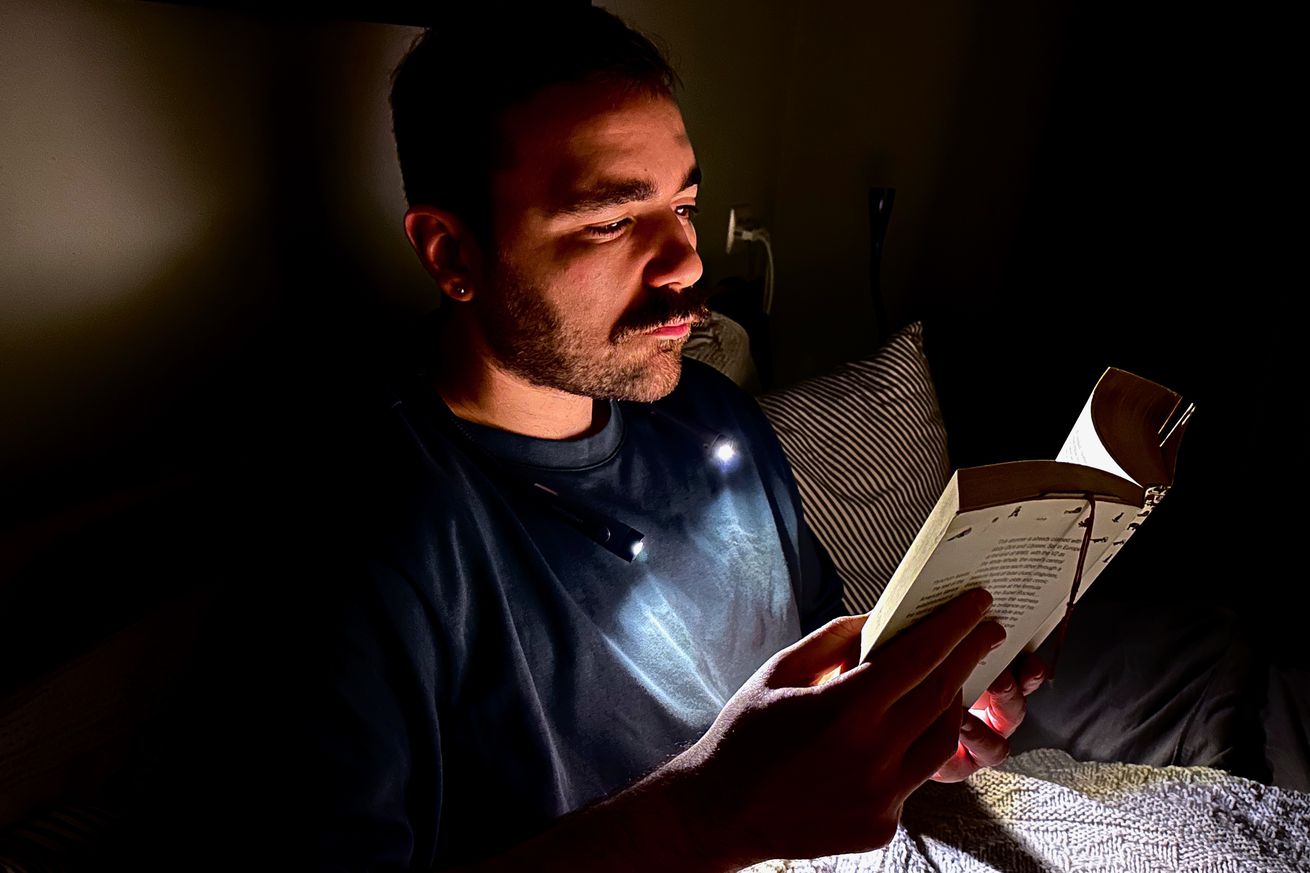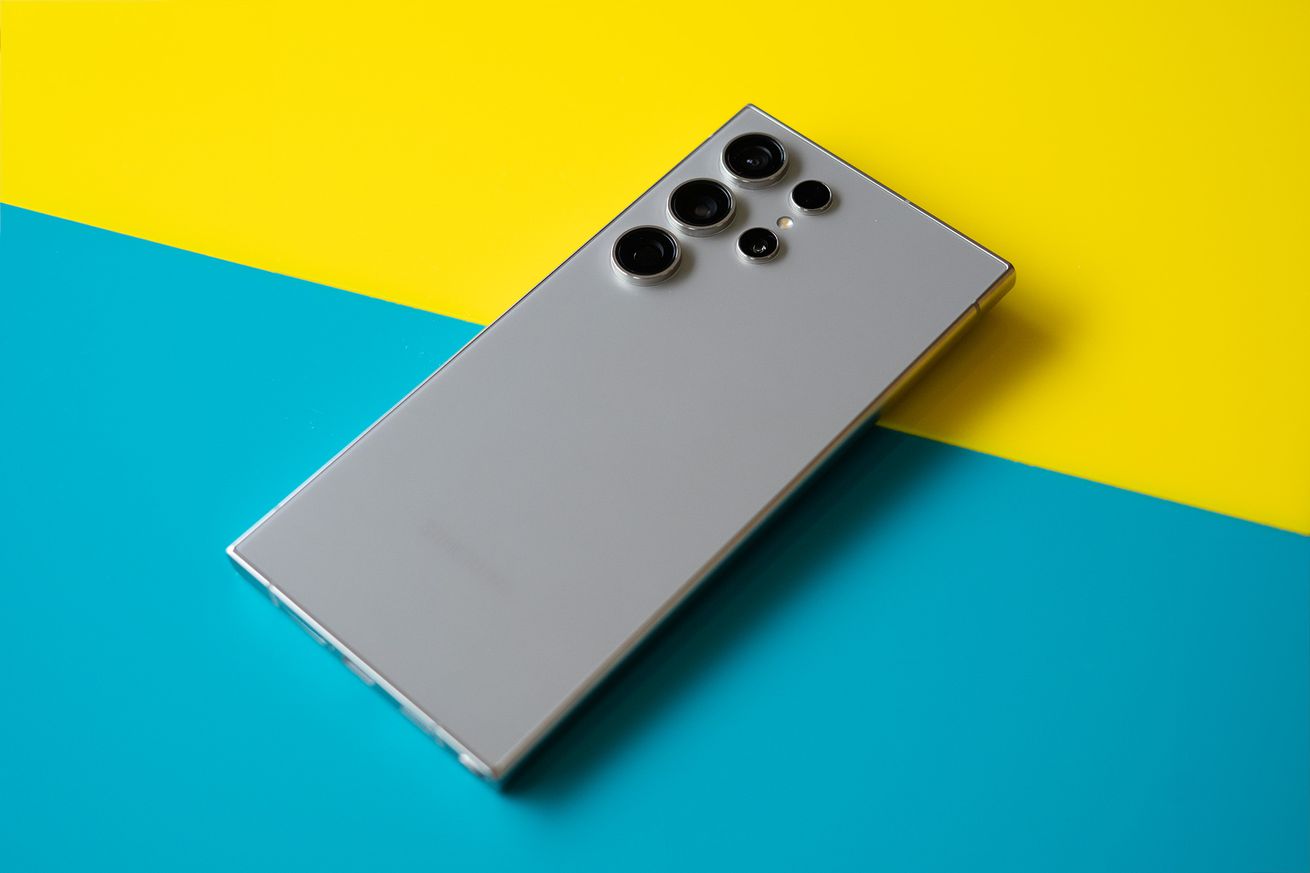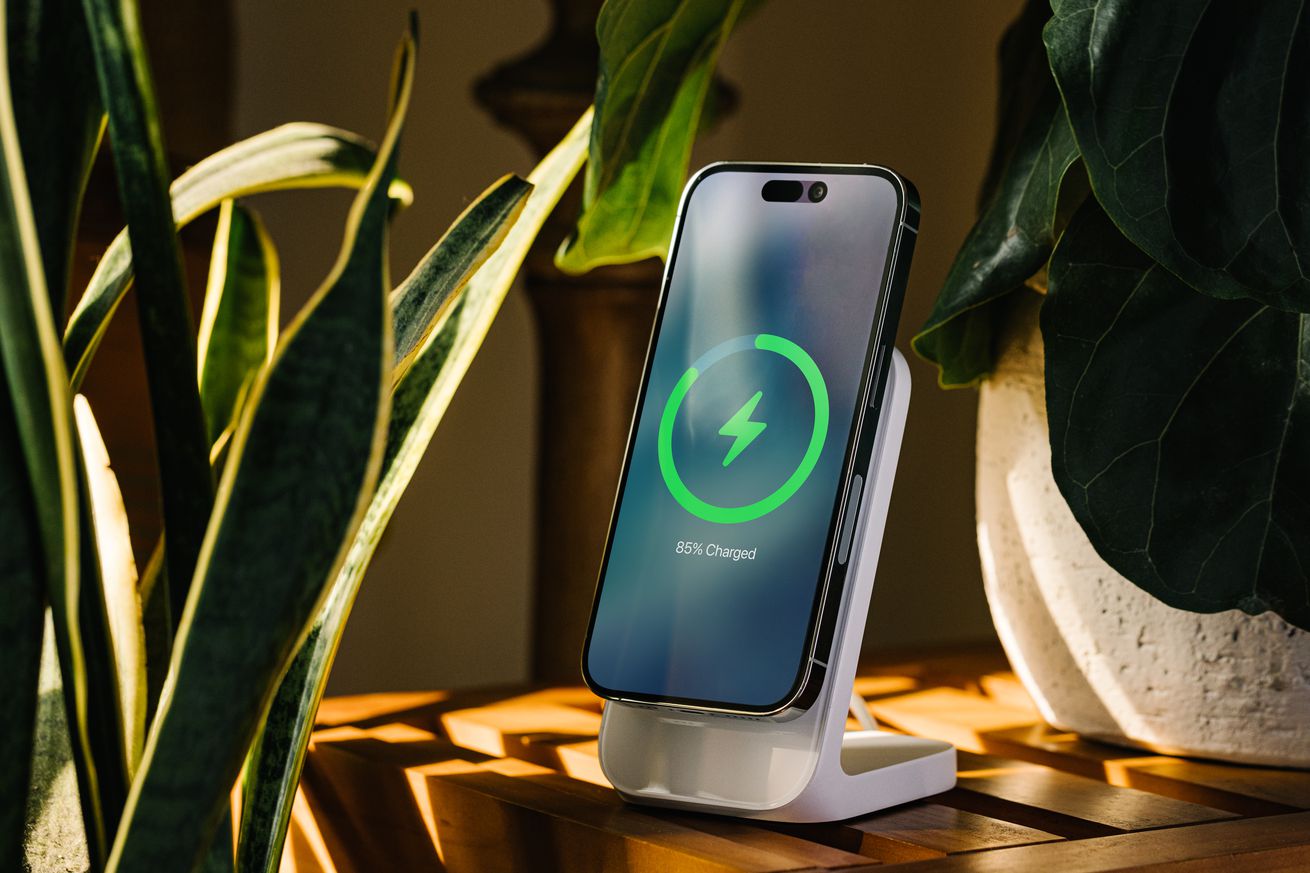
Hi, friends! Welcome to Installer No. 24, your guide to the best and Verge-iest stuff in the world. (If you’re new here, welcome, so psyched you found us, and also, you can read all the old editions at the Installer homepage.)
This week, I’ve been reading Kyle Chayka’s great book about algorithms, Filterworld, getting nostalgic about Tecmo Bowl, seeing if this show can get me into NASCAR like Drive to Survive got me into Formula 1, catching up on old Conan O’Brien Needs a Friend episodes, spending too much time debating whether I want a Vision Pro, trying to make my basement look more like Peter McKinnon’s studio, and trying desperately to figure out why everyone’s so worked up about rice cookers.
I also have for you a new AI search app, a bunch of shows to watch this weekend, a deep dive into all our news-gathering options, a new podcast about the internet, and much more. Let’s get into it.
(As always, the best part of Installer is your ideas and tips. What are you into right now? What should everyone else be into right now, too? Tell me everything: installer@theverge.com. And if you know someone else who might enjoy Installer, tell them to subscribe here.)
The Drop
- Arc Search. Honestly, can someone else build a cool new browser so I can stop talking so much about Arc? Please and thanks. For now, this is easily the most interesting company in this space, and the new Arc iOS app is both really cool and maybe an existential crisis for the internet. (Got a lot of recommendations for this one this week — thanks to everyone who sent it in!)
- Mr. & Mrs. Smith. I love the 2005 Brangelina movie, so I was slightly worried about whether this show would hold up, especially given all the behind-the-scenes shenanigans. But it seems to! People like it! (I also got a lot of recommendations for this one. My hopes might now be too high for this show…)
- Project Tapestry. As a rule, I don’t love linking to Kickstarters here, but for this, I’ll make an exception: the folks behind Twitterrific and Ivory, two wonderful social media apps, are building an app for collecting, organizing, and reading the internet. I think this is going to be awesome.
- Infinite Craft. Also as a rule, I will pretty much always post whatever Neal Agarwal makes on his website, which is full of fun and silly things to play with. This one is just an endless series of ways to combine things and make new things, and I cannot explain why I love it so much. But I love it so much.
- Circle to Search. Now available on a Pixel or Galaxy near you: a nifty way to search just by drawing a circle around whatever you see and care about. I love this — and I’m psyched to see that Microsoft might be bringing something similar to Edge and that Google’s multisearch feature is getting so much better in general. Bring this everywhere!
- The Skylight Calendar Max. My calendar app is the only reason I’m a remotely functional human being, so of course the idea of a 27-inch screen dedicated to blaring my calendar at me seems super compelling. It’s $600, which is ludicrous, but I’m this close to buying the 15-inch $300 model. Maybe I’ll start being on time for stuff.
- Curb Your Enthusiasm. I have a confession: until very recently, I’d never really watched Curb. Like, I’ve seen episodes, but I’ve never just done a full run-through of the show. Now, I’m about halfway through, and I can’t believe I was missing it. My goal is to be done before the final episode of this new, and final, season — which is apparently a great one.
- Marvel Studios Assembled: The Making of Echo. This is less a specific recommendation for this one and more a general recommendation for the whole Assembled series. Disney Plus is full of great behind-the-scenes stuff, and there are docs like this for a bunch of different Marvel stuff, almost all of which are super wonky and cool.
- Never Post. So far, there are only two episodes of this podcast — which is basically a bunch of Extremely Online people talking about Extremely Online things, and I mean that in the very best way — and I’ve loved them both. The first episode, on independent media companies, was particularly great.
Deep dive
A couple of weeks ago, I asked you to share all the ways you read the news. And by “news,” I mean any of the information you care about. This was mostly a selfish thing; with Artifact shutting down, I was losing one of my best sources of good links, and I didn’t know whether to reinvest in Flipboard or Reddit or Apple News Plus or something else entirely. Obviously, The Verge is the number one best news source for all things Verge, but I understand there are other things out there, too.
As always, the Installerverse delivered. Thanks to everyone who emailed, texted, posted at me, and otherwise hit me up with all your thoughts! I got a ton of new ideas. And as promised, I wanted to try and summarize and share how we all do things. So here goes:
- Most people just have A Place. Or two. Overwhelmingly, I heard from folks who mostly just open up one or two sources to get their news. The New York Times app was the most-named one by a pretty wide margin, which didn’t really surprise me. But I also saw a lot of The Washington Post, a lot of The Economist, some Wall Street Journal, a few fans of The Atlantic — the big national sources seem to be where most people start.
- There are so many good curators! I heard from a bunch of folks who really like getting a broad swath of stuff, quickly, all in one place. The three most popular ones were Informed News, Ground News, and Inkl.
- And then there’s Google News. If you want a news app that knows what you like, a number of folks said Google News is the place that most consistently shows them stuff they care about from all over. I got a couple of Apple News recommendations, too, but you all seem to really like Google’s personalization.
- We stan an RSS reader. Feedly got a lot of votes, but Inoreader and NetNewsWire both have some fans, and Feeeed and Unread both got a couple of shout-outs.
- Video isn’t huge, but it’s out there. I got a couple of “I get stuff from YouTube” emails and a couple of shouts for Philip DeFranco in particular, but not as many as I expected. One person, Josh, also specifically recommended PBS NewsHour on YouTube, which I’m also enjoying now.
A few of you even built your own bespoke news-gathering systems, which I loved hearing about. An email from Jeff was my favorite: Jeff made a tool called clickthru.news, which has “no tracking, no customization, no ‘mark as read,’ it updates itself a couple times a day, and I just read it until I get bored.” It’s delightful, y’all.
You know what surprised me most? How few “I get all my stuff from social networks” answers I got. A few years ago, I suspect Facebook, Twitter, Reddit, and others would have dominated this list, and now, they’re basically absent. Granted, the Installerverse isn’t the world, but still! Basically nothing to that effect! We’ve all just kinda moved on.
Personally, I’ve settled into a new routine. Most days, I start in Flipboard, which I set up with a few of my interests — I can swipe from general news to tech news to Formula 1 news to news about my town, and the content’s not always amazing, but it’s usually pretty solid. Then I do the big-name app roundup so many do: I check the Times, the Post, the Journal, and The Economist (which I think has the best app by far). All my blogs and feeds go into Feedbin, which I now read mostly in the Unread app. And thanks to you all, I also downloaded Google News, and I check it a few times a day. I do like it so far.
Oh, and then every once in a while, for as long as I can, I’ll still open Artifact. It had so many good ideas.
Screen share
Fun fact: before Installer launched, I made a prototype version of the newsletter and had Jake Kastrenakes – a deputy editor at The Verge and the crucially necessary, endlessly patient, and thoroughly-responsible-for-its-existence editor of Installer — share his homescreen. And then I promptly forgot that actually nobody ever saw it but me.
So now that we’re live, and we’re all here, I asked Jake to share again. Last time, I remember him having some delightfully weird wallpaper ideas. Turns out, not much has changed.
Here’s Jake’s homescreen, plus some info on the apps he uses and why:
/cdn.vox-cdn.com/uploads/chorus_asset/file/25263694/1000001004.png)
The phone: Pixel 8. It’s the slipperiest phone I’ve ever owned, and it finally convinced me to buy a phone case. I got the hazel one from Google.
The wallpaper: I love this illustration for how in contrast it feels to everything else on a phone. I found it on Twitter after I went down a rabbit hole of following a bunch of Japanese illustrators. The piece is by Shiho Konno, and I rudely ripped the illustrations from a tweet and rotated it to portrait orientation.
The apps: X and Threads (slightly out of reach to slightly reduce my usage), a step counter (to shame me into moving when I work from home), Spotify, Google Maps, Google Photos, Pocket (I used to use this, now it mostly sits there), The New York Times (now I read this instead), a shortcut to ChatGPT’s voice mode (I wanted to encourage myself to try more AI stuff; I don’t use it often, but the voice mode is really compelling), Instagram, Camera, Phone, Firefox (I just switched to this when it launched extension support), The Verge (with an Edge shortcut; the web icons Firefox makes are small and weird, so I’m just living with two browsers in my dock), Gmail, Google Messages.
I also asked Jake to share a few things he’s into right now. Here’s what he sent back:
- I just got an Analogue Pocket. Using it feels like playing games the way you remembered them. (Even if the games maybe play just a bit worse 20 years later.)
- This Yeule album from last year is like 50 percent of my Spotify listening right now. I will not be answering what percent Olivia Rodrigo is.
- Kashmiri Red Chili. It’s going in everything.
Crowdsourced
Here’s what the Installer community is into this week. I want to know what you’re into right now as well! Email installer@theverge.com or message +1 203-570-8663 with your recommendations for anything and everything, and we’ll feature some of our favorites here every week.
“Really enjoying PI.FYI after reading Kevin’s story. Lotta bugs but makes me feel indescribable things.” – Akhilesh
“Don’t know why NotePlan isn’t getting more attention — it’s a fantastic app for writing notes and planning using time blocks and has great integration with calendars and reminders. The developer, Eduard, is extremely good at listening to users.” – Anders
“The Memphis Belle is an (incredibly well-made) propaganda documentary from 1943. Watching it on YouTube and comparing it to Masters of the Air is fascinating and makes it obvious that it must have been a big source of inspiration for the show. The overlap is huge.” – Nino
“Arturia released a free update to their modern softsynth, Pigments, this week. While I can’t complain about a free upgrade to an already solid product, it’s not my pick: using Pigments 5 has underscored how much I prefer using the built-in synthesis tools of my DAW of choice, Bitwig Studio (it’s better than its name, honest!). Bitwig’s approach to modularity and consistent systems that apply across every aspect of the program really clicks with my nerd brain.” – Andrew
”I’ve been getting re-obsessed with Halo due to new Halo Infinite content as well as the forthcoming season 2 of the show, which seems like a massive improvement from the rather compromised first season.” – Kenton
“I recently started training for a triathlon using my Apple Watch. While it’s great in many ways, Apple’s Fitness app does not show as much data as I would like. HealthFit is a simple yet powerful app that fills this gap with its crazy graphs and more.” – Krystof
“Spurious Correlations. It’s absolutely lovely to have such weird pairings correlated. Example after example of the adage, ‘Correlation is not causation.’ And then to see the AI descriptions below the graphs’ completely made-up drivel applying causation is just chef’s kiss.” – Matthew.
“Obsessed with the James Figurine (Jimmy Tamborello from Dntel and The Postal Service) song from 2006 about texting and relationships before smartphones (and without T9).” – Michael
“My podcast recommendation is Pop Pantheon — ultra-deep dives into pop music careers and wider topics from host DJ Louie XIV and expert guests. Every episode is a joy to listen to; full of well-researched insight without any fat (despite the often multi-hour length), and I always come away with enhanced appreciation for the featured acts.” – Ben
“I’ve been watching video game expert Jeff Gerstmann play and rank every single NES game released in North America! It’s a wild endeavor to embark on, but there’s nobody else I’d rather see do it.” – Luke
“Winter travel is great: fewer crowds, things are cheaper. Dry hotel rooms are not great. I bought a portable USB-powered humidifier ahead of two winter trips. Putting it on the nightstand next to my face made a noticeable difference when waking up. In Europe, I plugged it into my battery pack when I left the room so it keeps going as power gets cut, and it worked perfectly. Amazon is littered with them, but I settled on this one.” – Sean
Signing off
Kevin Nguyen, a deputy editor at The Verge, sent over a recommendation that derailed my whole week. Here’s what he said: “There’s no football this weekend, but you can bridge that gap to the Super Bowl by playing Retro Bowl. It’s styled like the 8-bit days of Tecmo Bowl and has a perfect balance of simplicity and depth for a phone game. The free version is great (no ads, just some in-game currency you can purchase but don’t need at all), and there’s a version on Apple Arcade, too. My screen time went up 39 percent the week after I downloaded it, so you’ve been warned.”
He’s not kidding. I have been playing this game more or less nonstop since Kevin told me about it (it works really well with a controller, by the way), to the point where I have to leave my phone in the other room or I’ll play it all night and not sleep. I’ve been playing the Retro Goal soccer game, too, and it’s just as fun. Like Kevin said: you’ve been warned.
See you next week!

/cdn.vox-cdn.com/uploads/chorus_asset/file/25265495/videoframe_259102.png) Image: iFixit
Image: iFixit


/cdn.vox-cdn.com/uploads/chorus_asset/file/22954538/cgartenberg_211020_4819_0005.jpg) Photo by Chaim Gartenberg / The Verge
Photo by Chaim Gartenberg / The Verge
/cdn.vox-cdn.com/uploads/chorus_asset/file/24079874/Amazon_Kindle_Kids_2022_Lifestyle_Press_Image.jpg) Image: Kindle Kids
Image: Kindle Kids

/cdn.vox-cdn.com/uploads/chorus_asset/file/24078668/Amazon_Kindle_2022_Press_Image.jpg) Image: Amazon
Image: Amazon/cdn.vox-cdn.com/uploads/chorus_asset/file/22954534/cgartenberg_211020_4819_0002.jpg) Photo by Chaim Gartenberg / The Verge
Photo by Chaim Gartenberg / The Verge
/cdn.vox-cdn.com/uploads/chorus_asset/file/18329971/akrales_190723_3560_0016.jpg) Photo by Amelia Holowaty Krales / The Verge
Photo by Amelia Holowaty Krales / The Verge/cdn.vox-cdn.com/uploads/chorus_asset/file/24224274/226417__Amazon_Kindle_Scribe_AKrales_0143.jpg) Image: Amelia Holowaty Krales / The Verge
Image: Amelia Holowaty Krales / The Verge


/cdn.vox-cdn.com/uploads/chorus_asset/file/25257437/tomo_chat_from_tomo.jpg) Screenshot: Luka, Inc.
Screenshot: Luka, Inc.




/cdn.vox-cdn.com/uploads/chorus_asset/file/25254211/856504015510_E.jpg) Image: Nomad
Image: Nomad
